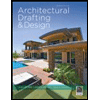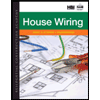AR-103 Assignment 3
docx
keyboard_arrow_up
School
Grand Rapids Community College *
*We aren’t endorsed by this school
Course
103
Subject
Civil Engineering
Date
Jan 9, 2024
Type
docx
Pages
3
Uploaded by GeneralBoar3605
AR-103 Assignment 3
Your name
: Colter Clark
Date of assignment submission
: 09/23/23
Source material: City of Grand Rapids Zoning Ordinance
Please answer and/or define the phrases and terms listed below.
They are from the reading assignment in the
Zoning Ordinance of the City of Grand Rapids.
The following questions will prepare you for the Quiz on Zoning.
The quiz covers all of the information that we have
studied in the course to date.
1.
Describe the two types of urban planning zoning models which have impacted the City of
Grand
Rapids.
Explain their historical differences and the reasons that prompted the new
zoning code.
The City of Grand Rapids has been influenced by two key urban planning zoning models: Euclidean
Zoning and Form-Based Zoning. Euclidean Zoning, historically used, separated land uses into
distinct zones but often led to urban sprawl and segregated development. The adoption of Form-
Based Zoning was prompted by a desire to revitalize the urban core, encourage mixed-use
development, promote sustainability, improve aesthetics, and attract economic investment. This shift
aimed to create more vibrant, walkable neighborhoods and address the limitations of traditional
zoning.
2.
Explain why the zoning ordinance is perceived to be a “paradigm” shift.
The zoning ordinance is perceived as a "paradigm" shift because it represents a fundamental
change in the way land use and development are regulated. Unlike traditional zoning codes that
focus primarily on separating land uses, a paradigm shift in zoning emphasizes factors like mixed-
use development, urban design, aesthetics, and sustainability.
3.
What are the three residential identifications?
What is the basis for these designations?
Elaborate on the theory that supports these designations.
A.
Single-Family Residential (R1), Multi-Family Residential (R2), and Mixed-Use Residential
(R3).
B.
These are primarily based on the density of housing units and the types of land uses
allowed. Single-Family Residential areas typically permit only one dwelling per lot and are
designed for single-family homes. Multi-Family Residential zones allow for multiple dwelling
units like apartments or townhouses on a single lot. Mixed-Use Residential areas are
designed to accommodate a mix of residential units along with commercial or retail uses
promoting walkability and a variety of amenities within the neighborhood.
C.
The theory that supports these designations is rooted in principles of land use planning and
urban design. It recognizes that different areas within a city should be designated and
regulated based on their intended use and density to achieve various urban planning goals.
4.
What are Overlay Districts?
Identify them and what are their purposes?
Overlay Districts are specialized zoning tools applied to specific geographic areas within the city to
address particular development goals and characteristics.
The Downtown Height Overlay District
, serves a specific purpose related to urban planning and
development within the city's downtown core. Its primary purpose is to regulate the height of
buildings in this area to achieve several urban planning and development goals.
The Grand River Overlay District
serves several purposes related to the development and
revitalization of areas along the Grand River within the city. While the exact details and regulations
may change over time, these typically include but aren't limited to:
Visibility of the Grand River is increased and enhanced by requiring building setbacks that will
provide for improved views of the River.
Existing river walk segments are extended along the entire length of the Grand River to allow for a
continuous connection alongside the River for recreational and environmental quality purposes
through donation, acquisition and easements.
Wildlife corridors along the River's edges are supported through a continuous network of
greenspaces.
5.
What is the purpose of the Board of Zoning Appeals?
How many people comprise this
board?
How does this board interact with the City Commission and with the Planning
Commission?
The purpose of the Board of Zoning Appeals (BZA), is to provide a mechanism for property owners
to seek variances or exceptions to the city's zoning regulations when strict application of those
regulations would create unnecessary hardship or undue burdens.
The BZA typically comprises nine members.
The BZA may report to the City Commission on its activities and decisions related to zoning
variances or appeals
The Planning Commission is responsible for long-term planning and zoning code development. The
BZA's decisions, which often involve individual property requests, must align with the broader zoning
code set by the Planning Commission.
6.
What is the Master Plan?
Elaborate on your answer
The Master Plan is a comprehensive and long-term planning document that serves as a blueprint for
the city's future growth, development, and land use. It outlines the city's vision, goals, and strategies
for various aspects of urban planning, such as land use, transportation, housing, economic
development, and sustainability. The Master Plan provides a framework for zoning regulations,
infrastructure investments, and public policies, guiding decision-makers, city planners, and
developers in shaping the city's physical and social environment. It is a critical tool for ensuring that
Grand Rapids grows in a coordinated and sustainable manner, meeting the needs and aspirations of
its residents while considering factors like economic development, environmental conservation, and
quality of life.
7.
What is the purpose of the City of Grand Rapids Zoning Ordinances?
Why is that
important?
The City of Grand Rapids Zoning Ordinances serve the purpose of regulating land use,
development, and construction within the city. These ordinances are important because they provide
a structured framework for urban development, ensuring that land is used efficiently and in a manner
that aligns with the city's long-term goals.
8.
How does “Use Regulations” protect the public health, safety and general welfare?
"Use Regulations" within zoning ordinances protect public health, safety, and general welfare by
carefully controlling the types of activities and land uses that can occur in different zones. These
regulations ensure that certain uses are compatible with their surroundings and minimize potential
hazards or nuisances like, industrial facilities may be zoned away from residential areas to reduce
noise and pollution impacts on residents' health and well-being.
9.
What does “counter review” mean in the context of the zoning code currently?
"Counter review" in the context of zoning codes typically refers to a preliminary review process
conducted at a city's planning or zoning department counter. During a counter review, individuals or
applicants seeking permits or approvals related to zoning and land use can visit the planning or
zoning department's counter to receive initial guidance and feedback on their project or proposal.
10. What are “Special Land Use Districts”?
Describe their purpose and how their districts are
important within the community?
"Special Land Use Districts" in the context of zoning typically designate specific geographic areas
within a community where particular land uses, activities, or developments are allowed under certain
conditions.
The purpose of these districts is to provide a flexible zoning framework that accommodates land
uses that may not fit neatly into standard zoning categories.
They are important within the community because they allow for customized and context-sensitive
planning
https://library.municode.com/mi/grand_rapids/codes/code_of_ordinances?nodeId=TITV--
ZONING_PLANNING_CH61ZOOR_ART8OVDI
-Source
Your preview ends here
Eager to read complete document? Join bartleby learn and gain access to the full version
- Access to all documents
- Unlimited textbook solutions
- 24/7 expert homework help
Related Documents
Recommended textbooks for you

Architectural Drafting and Design (MindTap Course...
Civil Engineering
ISBN:9781285165738
Author:Alan Jefferis, David A. Madsen, David P. Madsen
Publisher:Cengage Learning

Residential Construction Academy: House Wiring (M...
Civil Engineering
ISBN:9781285852225
Author:Gregory W Fletcher
Publisher:Cengage Learning
Recommended textbooks for you
 Architectural Drafting and Design (MindTap Course...Civil EngineeringISBN:9781285165738Author:Alan Jefferis, David A. Madsen, David P. MadsenPublisher:Cengage Learning
Architectural Drafting and Design (MindTap Course...Civil EngineeringISBN:9781285165738Author:Alan Jefferis, David A. Madsen, David P. MadsenPublisher:Cengage Learning Residential Construction Academy: House Wiring (M...Civil EngineeringISBN:9781285852225Author:Gregory W FletcherPublisher:Cengage Learning
Residential Construction Academy: House Wiring (M...Civil EngineeringISBN:9781285852225Author:Gregory W FletcherPublisher:Cengage Learning

Architectural Drafting and Design (MindTap Course...
Civil Engineering
ISBN:9781285165738
Author:Alan Jefferis, David A. Madsen, David P. Madsen
Publisher:Cengage Learning

Residential Construction Academy: House Wiring (M...
Civil Engineering
ISBN:9781285852225
Author:Gregory W Fletcher
Publisher:Cengage Learning